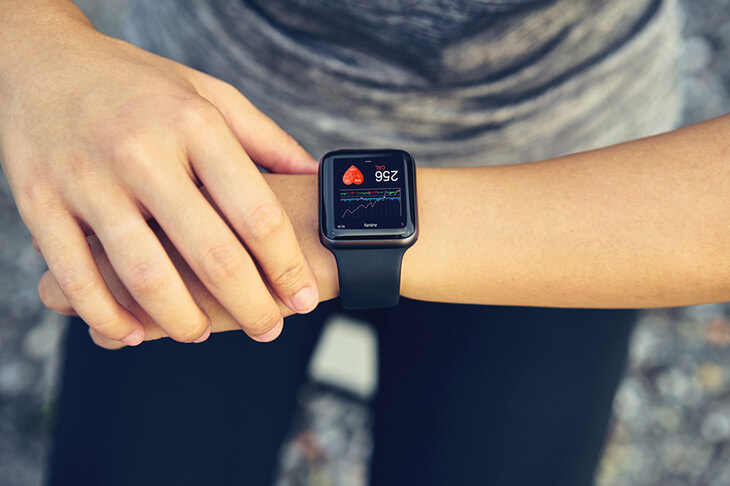Heart disease is the leading cause of death in the United States (causing one in four deaths each year) and is much more likely to affect our health than any infectious disease. Although both heart disease and infections are mostly preventable, there’s a lot we can do every day to live a heart-healthy life. In the past couple of years, with our focus on COVID, have we neglected some other basic lifestyle and wellness principles?

Exercise: Exercise can be intimidating, and you can always think up a lot of reasons why you shouldn’t exercise—it’s hard, you don’t have time, you’ll get sweaty, people will laugh at you if you do it wrong, it’s boring, the gym is expensive, you don’t have the right shoes or clothing…the list goes on and on. Exercise is and should be challenging, which is why it benefits you. But work on making it fun and find the activity that’s right for you. Anything is better than nothing. Start small and work towards 30 minutes of physical activity at least five days a week with two days of strength training. If you can’t do 30 minutes in one block, do five minutes here and there throughout the day. Be fun and creative with your exercise. Organize a pickleball tournament with your co-workers, dance with your family, walk with a friend. You’ll get the most out of physical activities that you enjoy, and you’ll keep coming back for more.

Eat better: As with exercise, start small. Work on improving your diet a little at a time. Planning is key. Plan a healthy menu and write a shopping list to take to the store. It’s easier to stick to your nutrition goals when you have healthy choices on hand and only buy what you need. Write it down. Keeping a food journal helps you focus on what you’re doing—good and bad. Be forgiving. You can’t change what you’ve eaten, but you can make better choices moving forward. Incorporate vegetables, fruits, and whole grains into your diet. Eat fish, poultry, beans, nuts, vegetable oils, and fat-free or low-fat dairy products. Try to cut down on foods high in saturated fat, sodium, sugar, and other sweeteners. Make better fast food choices—salads, smaller “meal deals.”

Strive for a healthy weight: Your best bodyweight range is one that promotes optimal physical and mental health. You should feel strong, energized, and confident at a healthy body weight. Being overweight taxes your heart and increases your risk of having heart disease, a stroke, high cholesterol, high blood pressure, and diabetes. Choose healthy foods and exercise regularly to achieve and maintain a healthy weight. Weight fluctuates with body size, so there’s no “ideal” body weight for all people. Everyone has a different body frame, body fat distribution, and height, all of which determine your healthiest weight range.

Quit smoking: Smoking harms your heart and blood vessels in many ways. Quitting is hard but possible and worth it. There is no single quit smoking plan that will work for everyone. Be honest about your needs. Set a quit date and ask your people for support. Stay busy. Avoid triggers. Stay positive. Consider starting a new hobby to keep your hands busy and connect you to others like sewing, knitting, woodworking, art, or music.

Reduce stress: Stress can contribute to heart risks. Practice meditation. Be physically active. Do relaxation therapy. Talk with someone you trust who might help you cope with stress. While smartphones, computers, and tablets are an unavoidable part of everyday life for many people, using them too often may increase stress levels. Cut down on caffeine. Consuming caffeine may increase your anxiety and stress if you’re sensitive to caffeine. Taking time for yourself is essential to living a less stressful, healthy life. Self-care doesn’t have to be elaborate or complicated. It simply means tending to your well-being and happiness. A sound social support system is essential for overall mental health. If you’re feeling alone and don’t have friends or family to lean on, social support groups may help. Consider joining a club or sports team or volunteering for a cause important to you.

Improve sleep: Not getting enough sleep or regularly getting poor quality sleep increases the risk of heart disease and other medical conditions. Aim for 7 to 8 hours of sleep a night. Keep a routine—have a regular bedtime and don’t eat late at night. Stay active during the day. Optimize your sleeping place by minimizing external noise, light, and artificial lights from devices like alarm clocks or cell phones. Test different temperatures for your bedroom to find out which is most comfortable for you. Around 70°F (20°C) is best for most people. Your bed, mattress, and pillow can significantly affect sleep quality, so try to obtain high-quality bedding, including a mattress. Make sure your bedroom is a quiet, relaxing, clean, and enjoyable place. In general, the bedroom should only be used for sleep and intimacy. Relaxation techniques before bed, including hot baths and meditation, may help you fall asleep.

Know where you stand: Meet your goals by tracking how much you exercise, blood pressure, and cholesterol numbers. Seeing where you are and tracking progress is motivating.

Connect with others: These goals are more fun and achievable if families and friends work together. We tend to eat and play like our friends and family, so your healthy choices may inspire those around you. People who are connected with others in a plan are more successful.
John Manwaring, PA-C
Canyon View Medical Group
References and Resources
https://www.cdc.gov/tobacco/campaign/tips/quit-smoking/index.html
https://www.everydayhealth.com/hs/family-nutrition-guide/motivation-to-eat-healthy/
https://www.healthline.com/health/how-much-should-i-weigh#understanding-body-weight
https://www.healthline.com/nutrition/17-tips-to-sleep-better
https://www.healthline.com/nutrition/16-ways-relieve-stress-anxiety
https://www.health.qld.gov.au/news-events/news/30-ways-to-get-active-exercise-fun
https://www.verywellfit.com/creative-at-home-workouts-you-can-do-today-86023









